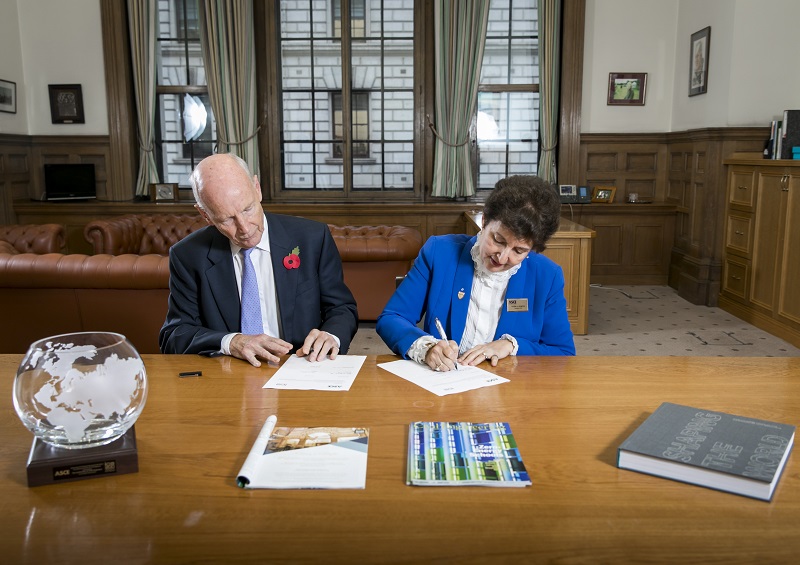The Institution joins a prestigious group of engineering projects that includes San Francisco’s Golden Gate Bridge, the Forth Bridge in Scotland and the Statue of Liberty in New York.
The American Society of Civil Engineers (ASCE) has designated the Institution of Civil Engineers as a Historic Civil Engineering Landmark, in the Institution’s 200th anniversary year.
More than 200 projects worldwide have earned this title, which recognises historically significant civil engineering projects, structures and sites around the world.
A physical plaque has been installed at ICE’s London headquarters to mark the award. It was unveiled today during the Global Engineering Congress.
“For more than 40 years, ASCE has recognised civil engineering achievements that have played a unique role in the development of America and the world as Historic Civil Engineering Landmarks,” said Robin Kemper, President of ASCE, said at the unveiling.
She said that the programme highlights the “pioneering spirit” of civil engineers.
ICE as a pioneer
Kemper recapped the ICE’s history, which demonstrates this trait, during the dedication.
“In 1818, a small group of young engineers met in a London coffee shop and founded the Institution of Civil Engineers, the world’s first professional engineering body.
“After two years of struggling to attract new members, ICE asked Thomas Telford to become its first president.
“His appointment in 1820 not only gave ICE a major boost, it also played a huge part in shaping who they are today.”
ICE President Professor Lord Robert Mair added:
“Our Institution was set up 200 years ago a group of young engineers with grand ambitions. I want that precedent to continue.
“I see a great and vibrant future for our profession. But this future requires us to transform ourselves; how we think and how we act. Above all we need to be ambitious and bold. There are huge science and technology developments to exploit.
“We are so grateful that one of your hugely valued Historic Civil Engineering Landmark plaques will be permanently on display here in One Great George Street, the home of civil engineering.”
Glenn Hewus, President of the Canadian Society for Civil Engineering, was also present at the unveiling.
“It is my esteemed privilege to acknowledge the efforts and commitment put forth by the Institution of Civil Engineers to forge ahead with steadfast determination,” he said.
“It is because of this type of commitment that civil engineering has progressed to what it is today.”H
How historic landmarks are named
The ASCE’s History and Heritage Committee nominates historically-significant civil engineering projects for recognition as part of an ongoing programme.
It reviews nominated projects and makes a recommendation to the ASCE’s Board of Direction for which one should be named as a landmark.
“Those who are actively involved with the process can tell you that this is not an easy task,” said Kemper.
ASCE’s landmark programme has been running for more than 40 years. Projects that have earned the designation include the Panama Canal, the Golden Gate Bridge in San Francisco, the Belfast Rail Link in Dublin, the Eiffel Tower in Paris, and the Granite Railway, the first commercial railway in the US.
Renewed cooperation
ICE and ASCE also strengthened their close ties by renewing their Agreement of Cooperation, with Lord Robert and Kemper signing the document yesterday (pictured below).
The agreement contains reciprocal arrangements, allowing each institution’s members to attend select meetings and participate in the local association activities of the other.
Eligible members of ASCE will also be entitled to a discount for ICE Associate Membership (AMICE).


Written by Anh Nguyen.





